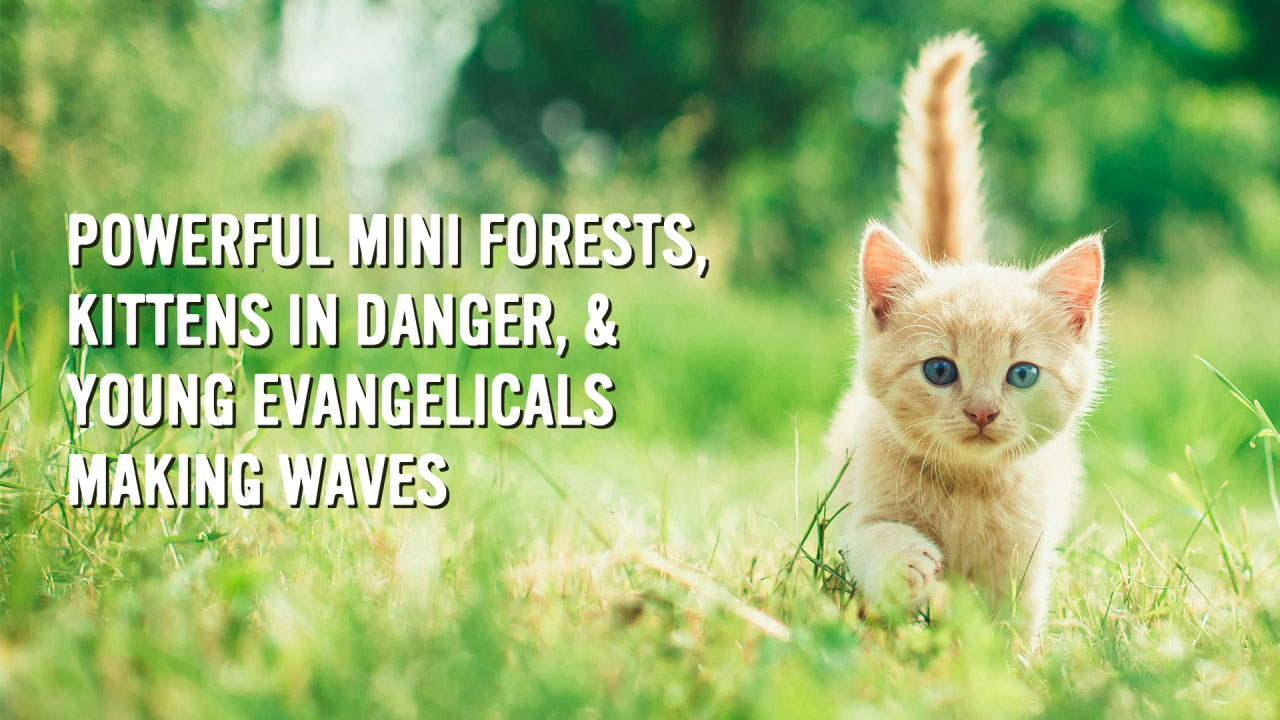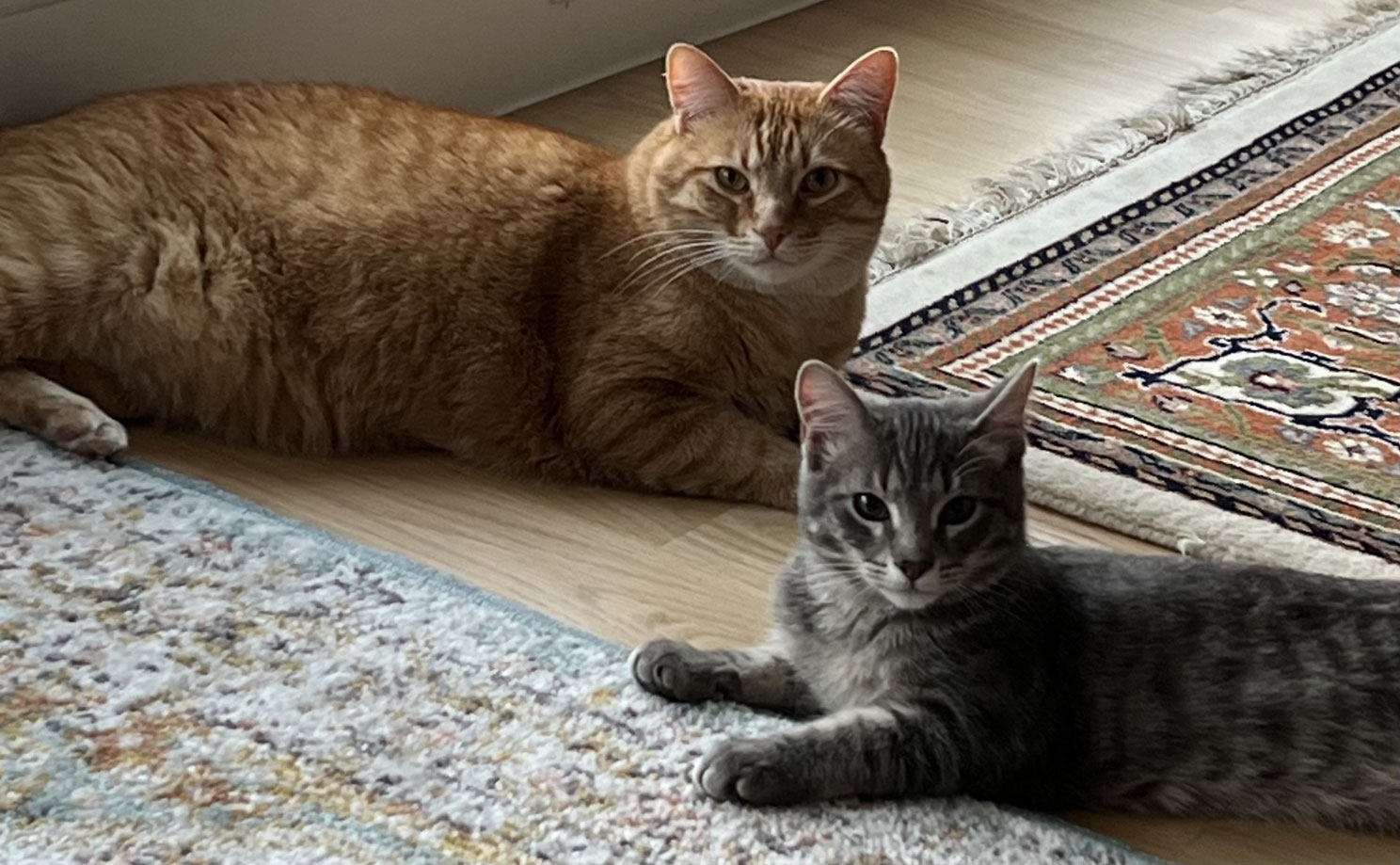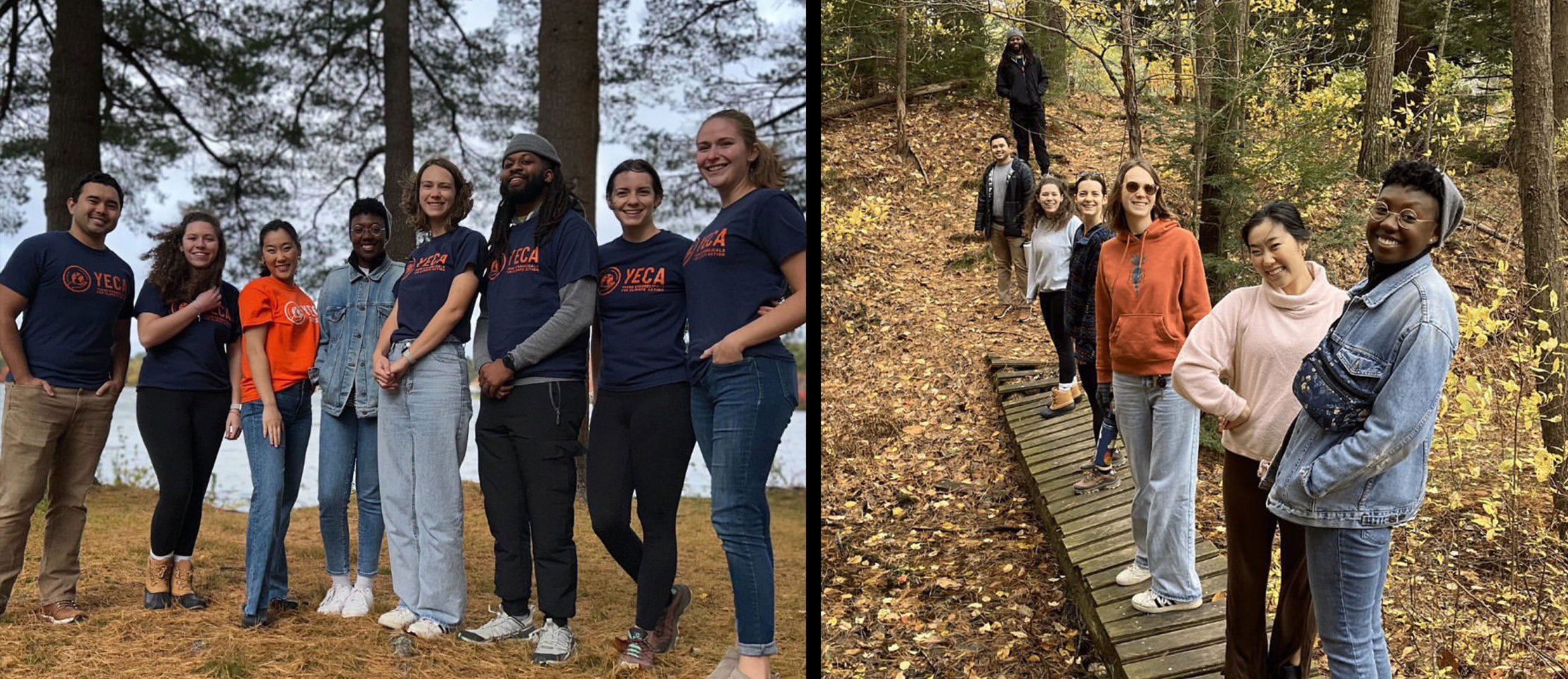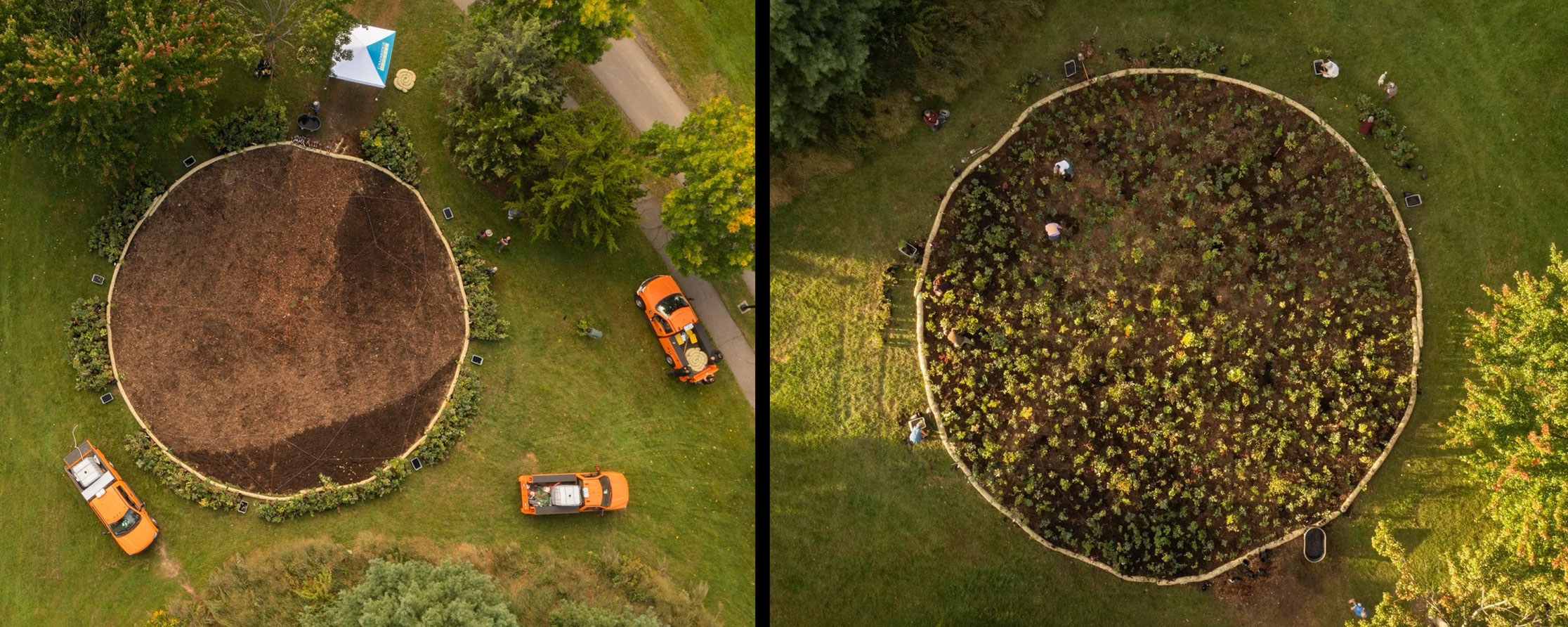 Photo by Andriyko Podilnyk, June 9, 2019
Photo by Andriyko Podilnyk, June 9, 2019
GOOD NEWS
Planting in September, 2021. Images: Dino Kuznik for Danehy Park Miyawaki Forest funded by SUGi
All around the world, people are planting tiny forests full of native plants on plots of land as small as a tennis court. These tiny forests — also called pocket forests, mini forests, and, in the U.K., “wee” forests — are based on principles developed in the 1970s by a Japanese botanist named Akira Miyawaki.
When I first heard about the Miyawaki forest being planted by middle-schoolers in California, I was amazed. “The reason we are planting the Miyawaki forests and using the Miyawaki method is to address climate change,” teacher Neelam Patil explained. By densely planting these small plots with native trees and shrubs, the competition between these plants for sunlight means that nearly a century’s worth of growth can be achieved in just a few decades.
Greening urban areas carries a host of benefits. These dense tiny forests cool their surrounding area, mitigating the urban heat island effect. The trees also filter pollution from the air, soak up floodwaters during heavy downpours, and provide a rich habitat for local wildlife. Because they’re so dense, these forests store more carbon than conventionally farmed trees would. And, as fifth-grader Lydia says here, “When I look at it, I feel very proud and I am happy that I’m helping the world.” That’s six wins!
Over 3000 projects around the world have already been created using Miyawaki’s methods, according to the British nonprofit Creating Tomorrow’s Forests. In Canada, six mini forests were planted last year while Amman, Jordan already has five mini forests and another in the works. Work on a new one on New York City’s small Roosevelt Island will begin this spring and an elementary schoolin McAllen, Texas is also getting one soon.
Want to learn more? Watch this video on the first tiny forest in Massachusetts, and consider starting one where you live. It’s a great project for neighbourhoods, communities and schools!
NOT-SO-GOOD NEWS
 My cats, Dr. Evil and Mr. Jekyll
My cats, Dr. Evil and Mr. Jekyll
I love kittens – but even our cats Dr. Evil and Mr. Jekyll (pictured above) agree that a world with a longer, more active kitten season isn’t good for anyone.
Feral cats are typically most fertile when it’s warm out, and unfortunately, each year kitten season seems to be starting earlier and ending later. This means more kittens for already overloaded shelters, more feral cats, and more threats to biodiversity. One study estimated that outdoor, mostly unhomed, cats kill between 1 to 4 billion birds and 6 to 22 billion small mammals in the U.S. alone every year.
As you might guess, climate change – with its milder winters and earlier springtime – is likely responsible. Milder winters may mean more food, and so cats start mating earlier in the year than they have in the past. “No animal is going to breed unless they can survive,” says Christopher Lepczyk, an ecologist at Auburn University who studies free-ranging cats. Milder winters mean that last year’s kittens may survive in larger numbers, too. “I would argue that temperature really matters,” Lepczyk said.
And animal shelters cannot keep up. The Humane Society of America already likens each kitten season to a “natural disaster.” “As the population continues to explode, how do we address all these little lives that need our help?” asks Ann Dunn, director of Oakland Animal Services. “We’re giving this everything we have.”
INSPIRATION OF THE MONTH
 YECA’s Steering Committee on an in-person retreat in Massachusetts, 2023
YECA’s Steering Committee on an in-person retreat in Massachusetts, 2023
Young people across the world, and in the United States, are generally more concerned about climate change – and in the U.S., this holds true of young evangelicals as well.
Since they were founded over a decade ago, I’ve served as a science advisor for Young Evangelicals For Climate Action. Today, there are thousands of these under-30s working on campuses and in churches across the U.S., helping shift the conversation on climate change from divisive arguments to hopeful action. Many, like Elsa Barron, considered leaving their faith due to the opposition to climate change they find in the broader U.S. evangelical community – but ultimately opted to stay, and fight to raise awareness about climate change despite opposition from their elders.
Others, like Michelle Frazer, are focusing on climate science as I do. Currently a postdoctoral fellow at Rice University, Michelle studies cloud feedbacks in climate models. Like Jessica Moerman and I, her faith informs her work. “God commands us to love – to have compassion for other people – and that should motivate us to care about climate change,” she says.
To learn about more inspirational YECA members, check out these profiles by Rolling Stone and 5280. To hear more from Michelle, check out this episode of the What In God’s Name podcast she appeared on with my friend and fellow climate scientist Thomas Ackermann. And as always, don’t forget to share what you learn with friends and family!




 Two Earth Day Events! Planet Heart’s 16th Annual World Peace Earth Day Celebration and A Better World’s Earth Day Celebration!
Two Earth Day Events! Planet Heart’s 16th Annual World Peace Earth Day Celebration and A Better World’s Earth Day Celebration!